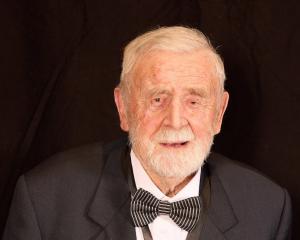
He never talks, he never takes lunch breaks or toilet stops — in fact, very few colleagues in the office even know he is there.
But soon, everyone is going to love Doug.
Doug — also known as the Domestic Otago Undergraduate robot — has been installed at the University of Otago and is geared up to help process first-year domestic enrolment applications for 2026, when they open today.
He joins Ava (Admissions Validation Automation), another robot which has been helping the university speed up the admissions process for international postgraduate applicants since June 2024.
Ava has helped process about 9500 postgraduate programme applications from more than 4500 international applicants, and helped slash the median waiting time for an offer of a place at Otago from more than 15 days, to less than 24 hours.
University of Otago deputy vice-chancellor (external engagement) Prof Jessica Palmer said speeding up the process was crucial because the difference between waiting 15 days and less than 24 hours for an application outcome could be a determining factor in whether a student ended up studying at Otago or elsewhere.
"We know that the quicker an offer is made, the more favourably an applicant looks at that institution," she said.
Doug and Ava work by using robotic process automation.
They make sure an application is valid and has all the necessary information attached — a repetitive task which is very time-consuming for a human to do manually.
If something is missing from a student’s application, the bots automatically send a message back to the applicant to let them know, or escalate the application for "hands-on attention" from a human staff member.
It means a task that was taking up a large portion of the day for four team members now only takes one team member an hour or two each day.
The team was excited about Doug joining the them to help with undergraduate applications.
And the university is now exploring other ways to use the technology, in a bid to improve student experiences and help busy teams like admissions.
Student administration team leader Louise Ross said it was great to welcome Doug to the team.
"He’s only just started working here, and already we really like him."
However, she said it was important to remember that both Doug and Ava were not there to replace staff.
Rather, they were there to enhance the team’s capabilities.
"The time saved means that our team can use their expertise to focus on, and move more quickly through, the other aspects of processing applications that can’t be automated."














